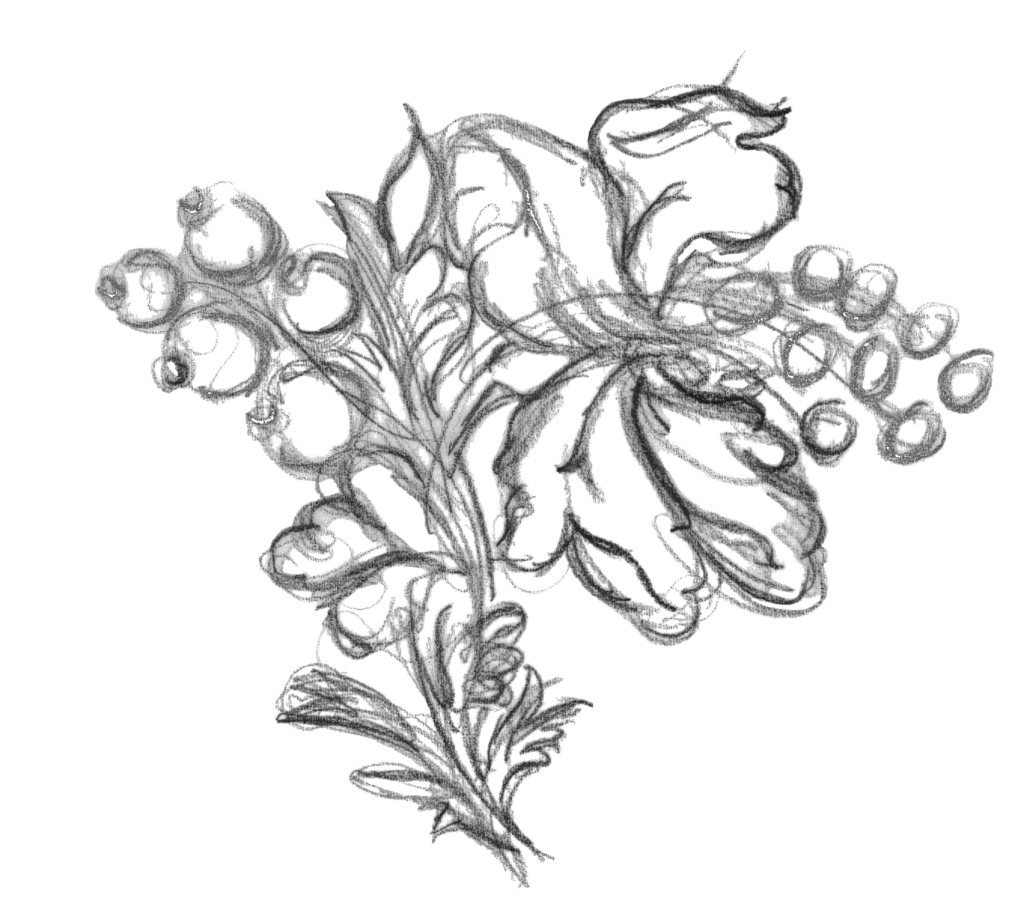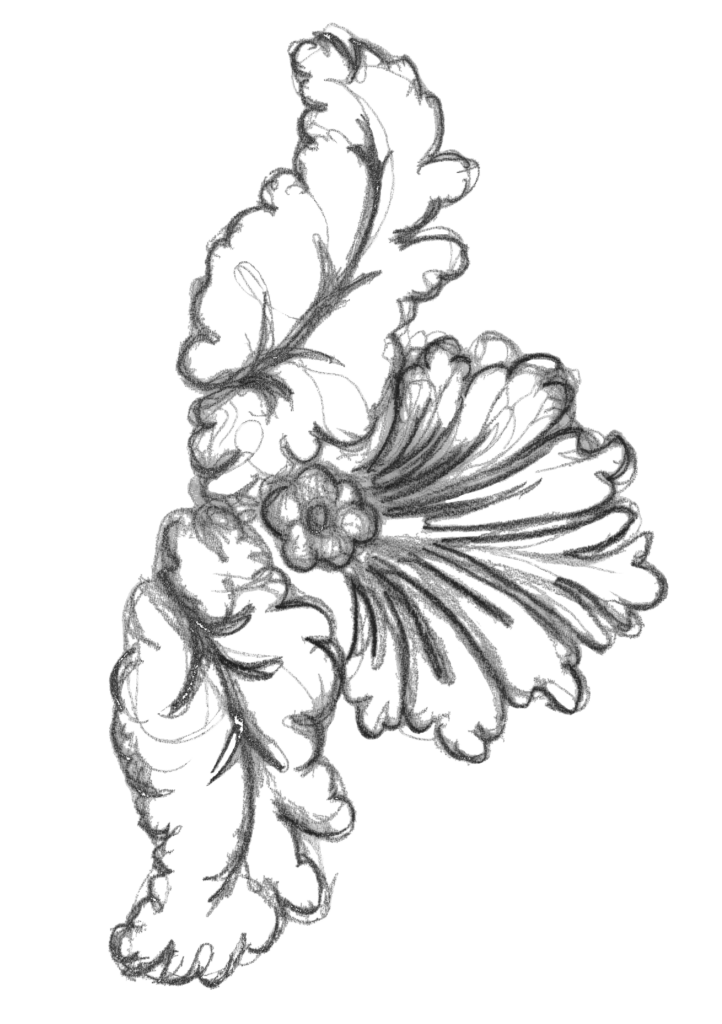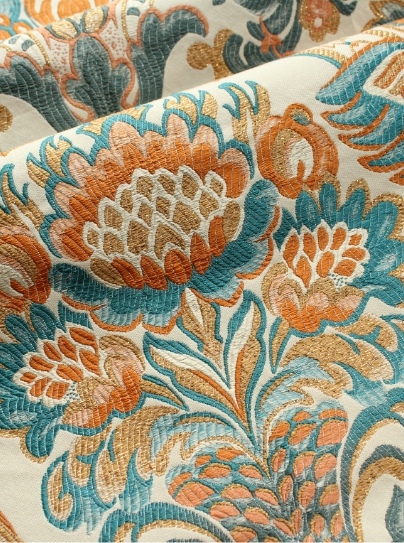The 18th century is a time in history where wealth, success & opulence could be shown in textiles within interior decoration. Here we celebrate the furnishings and influence of this important period.
The 18th century textiles began with the newly arrived Huguenots bringing with them a wealth of talent in all the creative arts, including weaving textiles. The fabrics that shaped this century in England were in styles and fashions seen in France and Italy and equal to those seen elsewhere around the world.
1700 – 1725
The country up to this point was a nation of wool weavers creating mostly plain textures woven on primitive cottage looms. We lacked the craft of in dying and finishing but this was something that changed with the arrival of the Huguenots, who came from major silk weaving cities such as Lyon in France. 18th century textiles such as Tammy, Camlet, and Serge DeNimes all woven in wool gradually made way for “half silks.” These fabrics qualities included Bombazine, Poplin, Moiré finished silk and Mohair Repp as the craft of making more refined clothes got under way. The Huguenots had brought with them skills in the making and finishing of cloth not seen in England before.
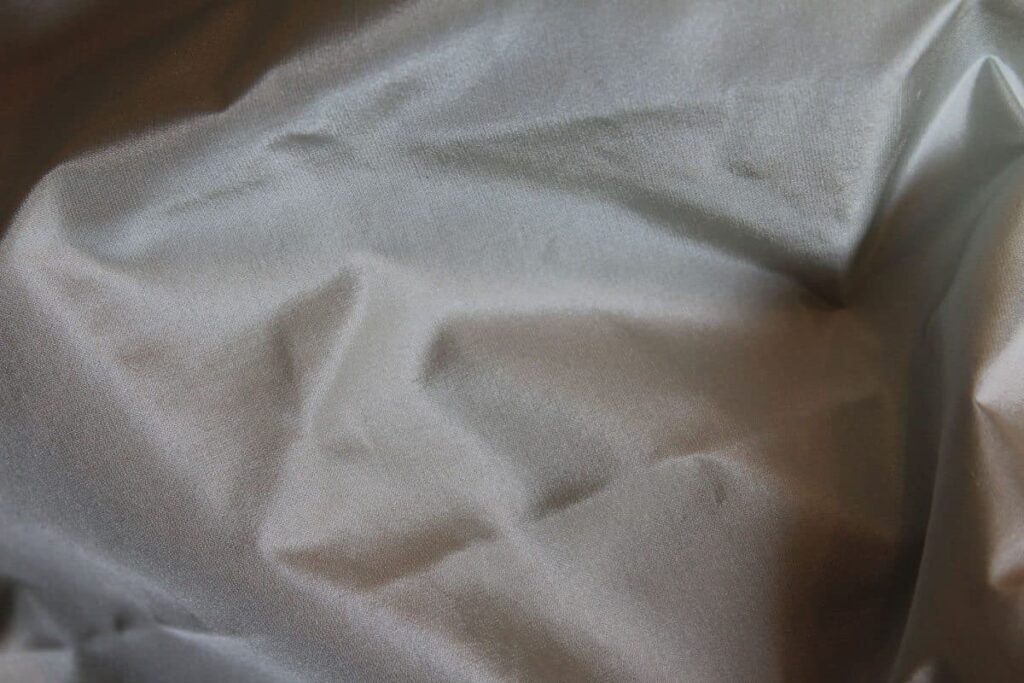
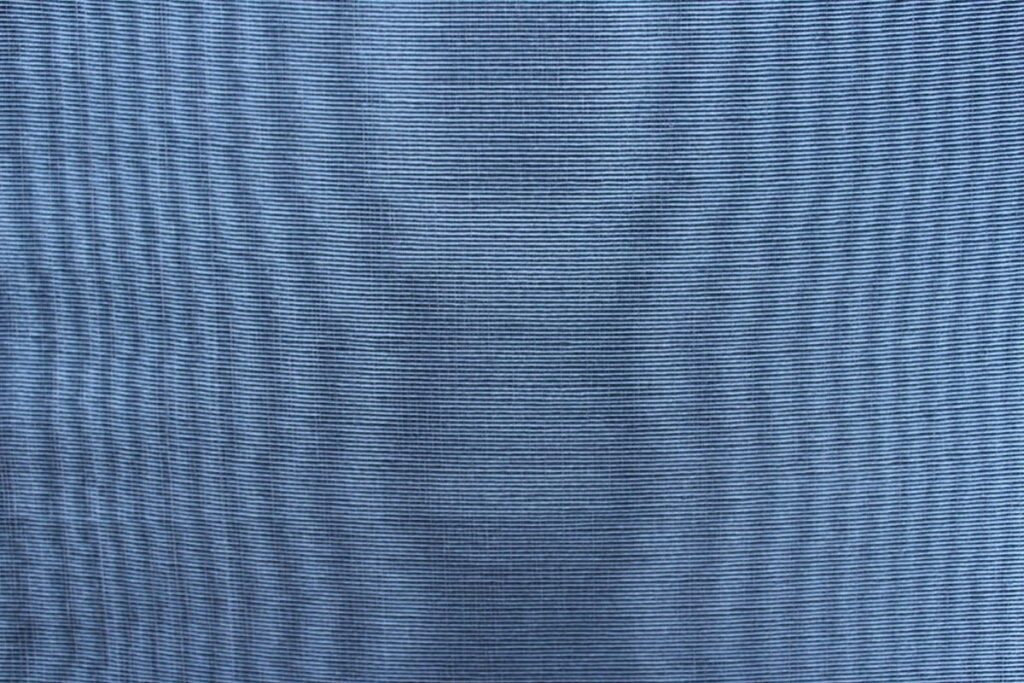
The development and building of our massive country estates demanded the visual impression of wealth. These schemes commanded large amounts of fashionable sumptuous cloth to show one’s fortune along with lavish furniture. Wood panelling from the previous century was being replaced with fabric, firstly loose hung and as early as 1730 tight hung with plain cloth soon followed by patterned damask. During this period the “Bizarre” patterns from the continent were first seen, and identified by there curious design style. One of the key designers was James Leman, 1688-1745. Leman, who was of Huguenot decent, designed clothing and furnishing fabrics in Spitalfields and was hugely popular during his time. You can see one of the designs we have attributed to him below:
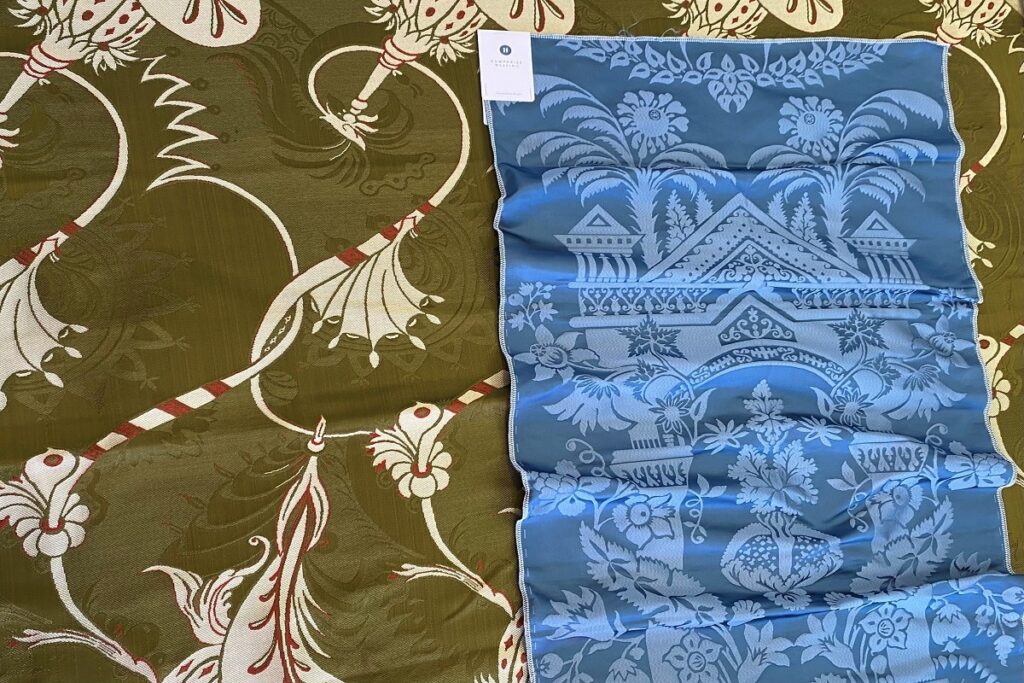
1725 – 1750
The second quarter of the 18th century textiles saw a time when the buildings of both town and country houses reflected the growth of wealth in England. Examples include Hyland’s Park in Chelmsford, and Holkham Hall in Norfolk which was slow to complete, with the interior decorating ranging from 1731 to 1764.
With big Italian style properties came interior fashion with large ornate Italian patterns for the decoration. Good examples are “Ayrshire” damask at Dumfries and the Kedleston damask used at National Trust – Shugborough Hall. Designs featured large flower and leaf motifs mirrored across the width of the fabric. These fabrics were woven at three spans of a man’s hand, this 21” cloth width was set by the Weavers company of London to stop illegal smuggling of less expensive wider width French imports which had been banned. The French silk weavers wove slightly wider at 22” making it easier to identify and confiscate smuggled goods.
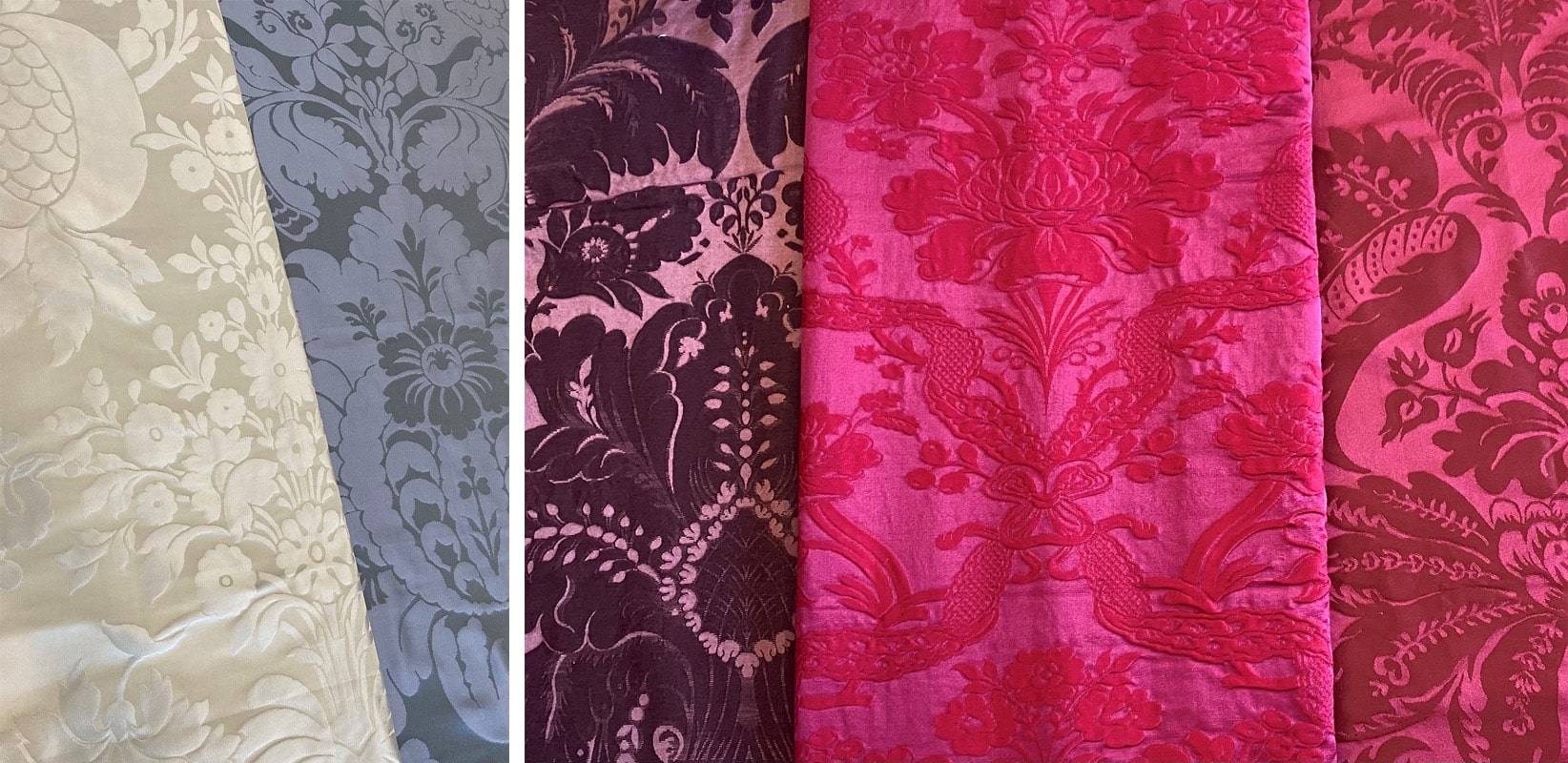
1750 – 1775
The building of numerous country estates were underway, and all needed to be decorated in the latest styles. Robert Adam and Thomas Chippendale both made their mark in history at this time. Adam was responsible for many fashionable interiors, with dated interiors such as Alnwick Castle being replaced with stylish layouts of walling, ceiling, and floor pattens. Chippendale made the furniture to complete the elegant and gracious appeal of splendour.
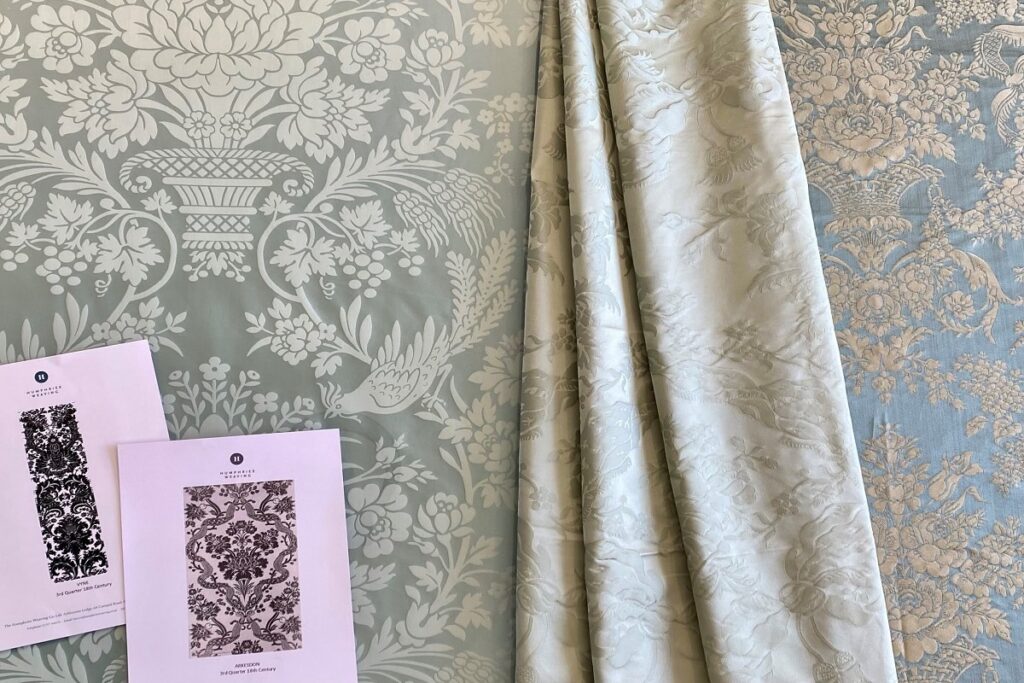
1775 – 1800
During the 4th Quarter of the 18th century textiles the elegance of the preferred fashion style was seen in interior schemes, with half gilt furniture and many French patterns seen in textile decoration. Above all, this century was such an important one due to our new found ability to create textiles of such grandness and style for the first time. Our manufacturing ability had become world leading as the age of steam power was dawning.
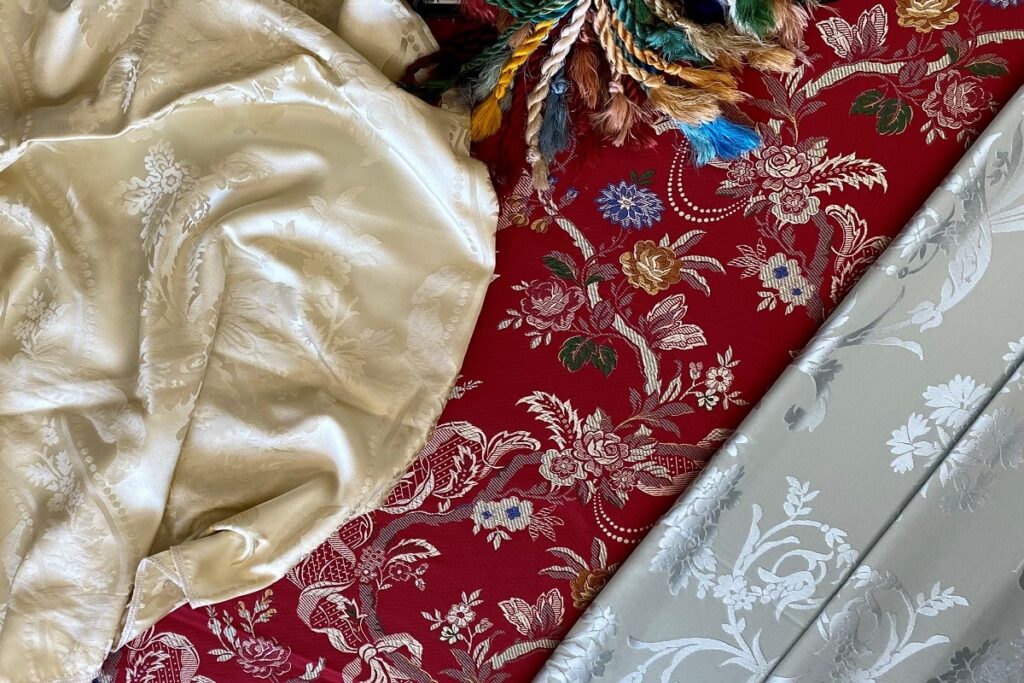
During this period a Doctor of Medicine began to look at the hand loom and the actions of the operator, which was strenuous and difficult to manage. Therefore, Doctor Edmund Cartwright invented a way of recreating the weavers’ actions mechanically. The power loom invention was seized upon by others who soon perfected his machine idea, and fabrics were able to be woven at a higher speed and wider width. Our manufacturing ability had become world leading, as the age of steam power was dawning in the textile industry.
Interested in exploring more traditional textiles? Read some articles below:
17th Century Textiles
19th Century Textiles
[/spb_text_block] [/spb_row]
